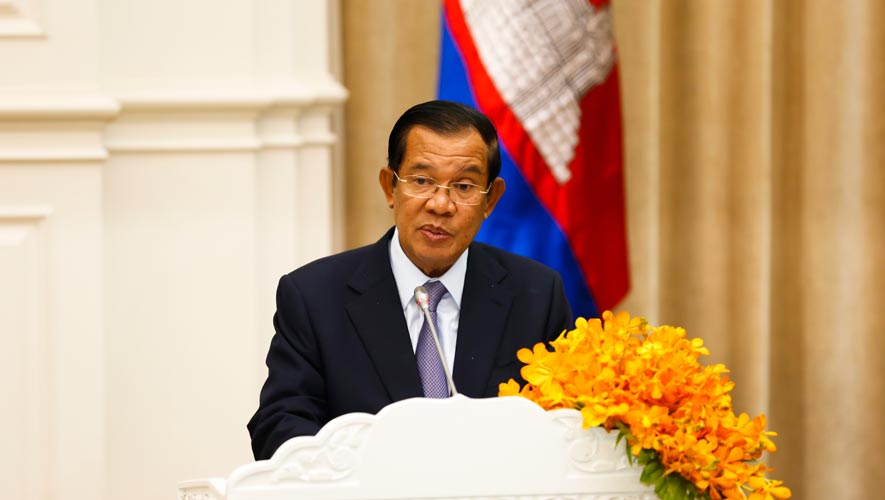Challenges continue to overwhelm infrastructure service providers as they strive to meet network customers’ insatiable appetite for data consumption
For the latest Cambodian Business news, visit Khmer Times Business
The need for digitisation in terms of literacy and inclusivity has seen an uptrend in Cambodia, and mobile network coverage works hand in hand in to sustain that growth. Today, technological access in Cambodia has become a fundamental need as communities, of different age and income classes, embrace a more digital lifestyle. This has only raised the appetite for higher data consumption.
In the last decade, connectivity has transformed into a game changer for both public and private sectors, and thereby the economy, where immense potential via the Internet is unlocked, empowering the population. This is in line with the government’s goal of achieving a digital economy by 2023.
Cambodia envisions having 100 percent broadband service coverage in urban areas and 70 percent in rural areas, as well as Internet penetration by 2020. Mobile penetration in the country is currently over 110 percent with 2018 alone witnessing more than two million mobile user growth.
According to online data, some 35 countries including China, and Singapore have achieved 100 percent mobile network coverage. To meet that goal in Cambodia, infrastructure service providers are working tirelessly to ensure that mobile network coverage expands by transitioning to 4G and beyond from 3G.
When it happens, the market is expected to experience further densification of networks, and rise in capacity and coverage demands. But this does not come without problems.
Chief regional officer for Asean North, Phillip Wong of Kuala Lumpur-listed Axiata Group Bhd’s wholly-owned subsidiary edotco Group Sdn Bhd says there are gaps between major and provincial cities, and rural areas which restricts connectivity to people resulting in the lagging embrace of a digital lifestyle in comparison with their counterparts in more connected areas.
“We see the securing of land for telecommunication tower sites as a challenge in advancing our target because the process involves multiple stakeholders including landlords, neighbours and local councils. This prolongs the time to secure the locations,” says Wong, who is also country managing director for edotco (Cambodia) Co Ltd.
Integrated infrastructure service provider edotco (Cambodia) owns and operates 3,600 telecommunication towers throughout the Kingdom.
Chiming in, Ian Watson, chief executive officer of Cellcard operator CamGSM Co Ltd says the challenges never end and investments are constantly needed.
“We are focussing on further enhancements in high density areas, improving indoor coverage and preparing for pre-5G and 5G (rollouts). (The thing is) it is not just about reaching 100 percent coverage, rather it is about deploying network that can give customers very high speeds, and entirely new experiences and services,” he adds.
Watson tells Capital Cambodia that Cellcard’s pre-5G and 5G rollout is pertinent as it gives remote areas the same connectivity of the urban centres.
In recent years, companies the world over have been persevering to implement 5G services. In Cambodia, Chinese telecommunication giant, Huawei Technologies Co Ltd, a 5G pioneer, has dedicated its services in helping operators provide seamless 5G services.
Wong is confident the challenges will help to shape the direction of the company.
“At edotco, our experience in developing in emerging markets positions us well in navigating these challenges and we continue to engage regularly with the stakeholders,” he says.
In tackling land and location issues, edotco has innovative approaches such as camouflage towers and special structures that blend in with different environments which help in securing ground and building rentals.
“The solutions are developed with the entire ecosystem in mind and by complying with local laws and customs. Our future operation rests on providing state-of-the-art solutions such as street furniture and small cells. This not only facilitates the proliferation of mobile connectivity but also maximises operational efficiencies by leveraging on new technologies that enhance the telecommunication infrastructure industry.
“We hope to provide the right sharable infrastructure required to facilitate Cambodia’s digital agenda including next generation technologies like bamboo infrastructure, carbon fibre infrastructure, and in-building solutions to meet the 4G and 4.5G capacity requirements,” Wong says.
Watson opines that Cellcard’s fellow competitors’ expansion and improvement of their networks in terms of coverage, speed and capacity is good for Cambodians.
He notes that in 2017, there was a 36 percent growth in mobile data in Cambodia. In 2018, there was 19.5 million mobile connections which was made up of 13.6 million mobile internet users, seven million Facebook accounts, two million of that created that year alone.
“With a population of 16 million and a gross domestic product growth of seven to eight percent each year, it is a healthy indication of mobile data take-up rate and usage. We see this rising in future,” Watson adds.




